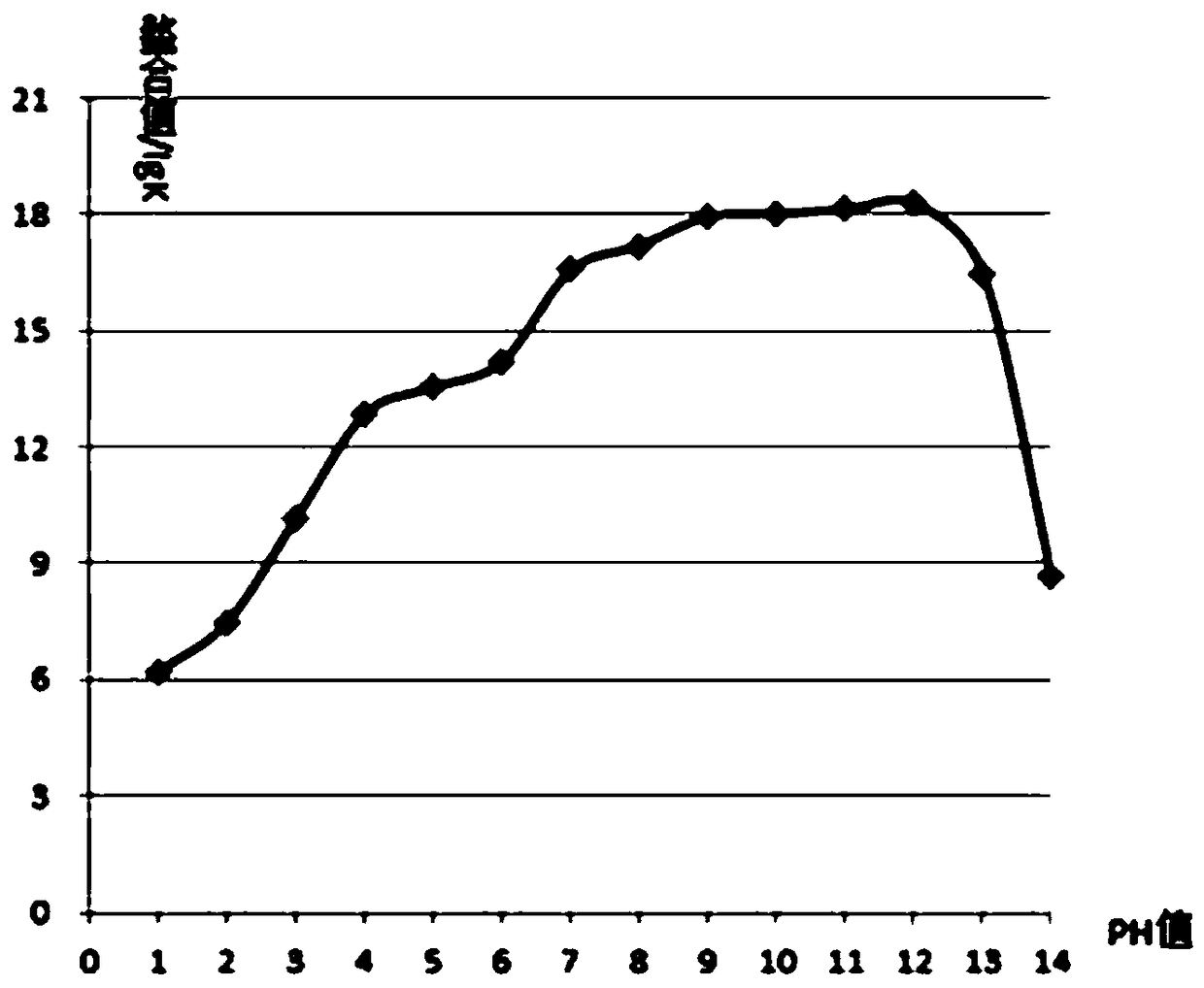Garbage incineration fly ash treatment chelating agent
A technology of waste incineration fly ash and chelating agent, which is applied in the direction of protection devices against harmful chemicals, can solve the problems of difficult natural degradation of heavy metals, increased heavy metal pollution, environmental impact, etc., and achieves low processing cost, short reaction time, and operation handy effect
- Summary
- Abstract
- Description
- Claims
- Application Information
AI Technical Summary
Problems solved by technology
Method used
Image
Examples
Embodiment 1
[0022] A chelating agent for waste incineration fly ash, comprising the following components in parts by weight: 50 parts of sodium dimethyl dithiocarbamate; 30 parts of a mixture of dithiocarbamic acid and dithiocarbamate; 20 parts of compound phosphate share.
[0023] Further, dithiocarbamic acid and dithiocarbamate are made of polyolefin polyamine and CS 2 Generated under alkaline conditions, where polyolefin polyamines include ethylenediamine and diethylenetriamine.
[0024] Further, the compound phosphate is any of sodium tripolyphosphate, sodium hexametaphosphate, sodium pyrophosphate, trisodium phosphate, disodium hydrogen phosphate, sodium dihydrogen phosphate, sodium acid pyrophosphate, disodium dihydrogen pyrophosphate A combination of the two.
[0025] Further, when used, the chelating agent is mixed with the curing molding component, fly ash, and water in any proportion, and the curing component is Portland cement.
Embodiment 2
[0027] A chelating agent for waste incineration fly ash, comprising the following components in parts by weight: 50 parts of sodium dimethyl dithiocarbamate; 40 parts of a mixture of dithiocarbamic acid and dithiocarbamate; 30 parts of compound phosphate share.
[0028] Further, dithiocarbamic acid and dithiocarbamate are made of polyolefin polyamine and CS 2 Generated under alkaline conditions, where polyolefin polyamines include ethylenediamine and diethylenetriamine.
[0029] Further, the compound phosphate is any of sodium tripolyphosphate, sodium hexametaphosphate, sodium pyrophosphate, trisodium phosphate, disodium hydrogen phosphate, sodium dihydrogen phosphate, sodium acid pyrophosphate, disodium dihydrogen pyrophosphate A combination of the two.
[0030] Further, when used, the chelating agent is mixed with the curing molding component, fly ash, and water in any proportion, and the curing component is Portland cement.
Embodiment 3
[0032] A chelating agent for waste incineration fly ash, comprising the following components in parts by weight: 50 parts of sodium dimethyl dithiocarbamate; 35 parts of a mixture of dithiocarbamic acid and dithiocarbamate; 25 parts of compound phosphate share.
[0033] Further, dithiocarbamic acid and dithiocarbamate are made of polyolefin polyamine and CS 2 Generated under alkaline conditions, where polyolefin polyamines include ethylenediamine and diethylenetriamine.
[0034] Further, the compound phosphate is any of sodium tripolyphosphate, sodium hexametaphosphate, sodium pyrophosphate, trisodium phosphate, disodium hydrogen phosphate, sodium dihydrogen phosphate, sodium acid pyrophosphate, disodium dihydrogen pyrophosphate A combination of the two.
[0035] Further, when used, the chelating agent is mixed with the curing molding component, fly ash, and water in any proportion, and the curing component is Portland cement.
PUM
 Login to View More
Login to View More Abstract
Description
Claims
Application Information
 Login to View More
Login to View More - R&D
- Intellectual Property
- Life Sciences
- Materials
- Tech Scout
- Unparalleled Data Quality
- Higher Quality Content
- 60% Fewer Hallucinations
Browse by: Latest US Patents, China's latest patents, Technical Efficacy Thesaurus, Application Domain, Technology Topic, Popular Technical Reports.
© 2025 PatSnap. All rights reserved.Legal|Privacy policy|Modern Slavery Act Transparency Statement|Sitemap|About US| Contact US: help@patsnap.com



